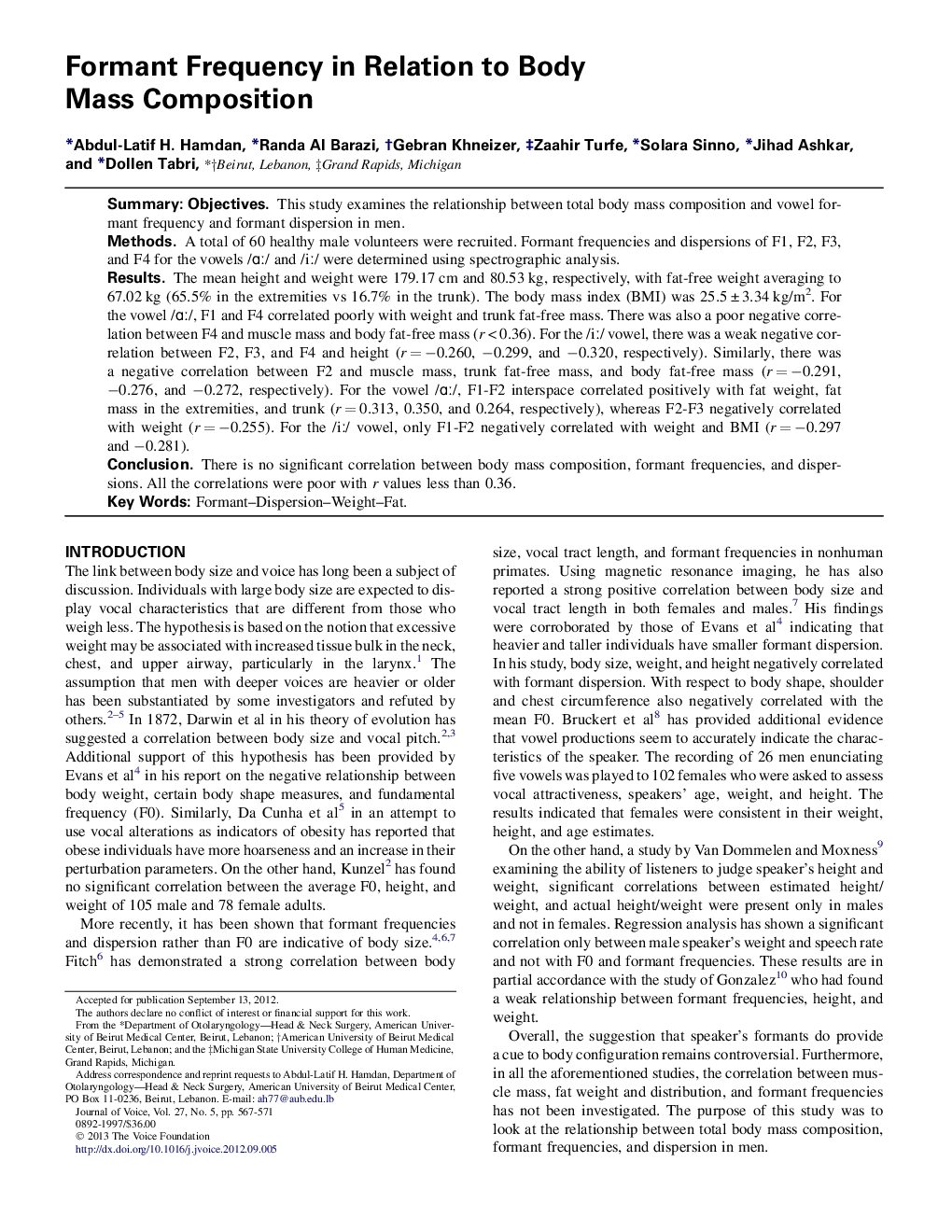| Article ID | Journal | Published Year | Pages | File Type |
|---|---|---|---|---|
| 1101711 | Journal of Voice | 2013 | 5 Pages |
SummaryObjectivesThis study examines the relationship between total body mass composition and vowel formant frequency and formant dispersion in men.MethodsA total of 60 healthy male volunteers were recruited. Formant frequencies and dispersions of F1, F2, F3, and F4 for the vowels /ɑː/ and /iː/ were determined using spectrographic analysis.ResultsThe mean height and weight were 179.17 cm and 80.53 kg, respectively, with fat-free weight averaging to 67.02 kg (65.5% in the extremities vs 16.7% in the trunk). The body mass index (BMI) was 25.5 ± 3.34 kg/m2. For the vowel /ɑː/, F1 and F4 correlated poorly with weight and trunk fat-free mass. There was also a poor negative correlation between F4 and muscle mass and body fat-free mass (r < 0.36). For the /iː/ vowel, there was a weak negative correlation between F2, F3, and F4 and height (r = −0.260, −0.299, and −0.320, respectively). Similarly, there was a negative correlation between F2 and muscle mass, trunk fat-free mass, and body fat-free mass (r = −0.291, −0.276, and −0.272, respectively). For the vowel /ɑː/, F1-F2 interspace correlated positively with fat weight, fat mass in the extremities, and trunk (r = 0.313, 0.350, and 0.264, respectively), whereas F2-F3 negatively correlated with weight (r = −0.255). For the /iː/ vowel, only F1-F2 negatively correlated with weight and BMI (r = −0.297 and −0.281).ConclusionThere is no significant correlation between body mass composition, formant frequencies, and dispersions. All the correlations were poor with r values less than 0.36.
